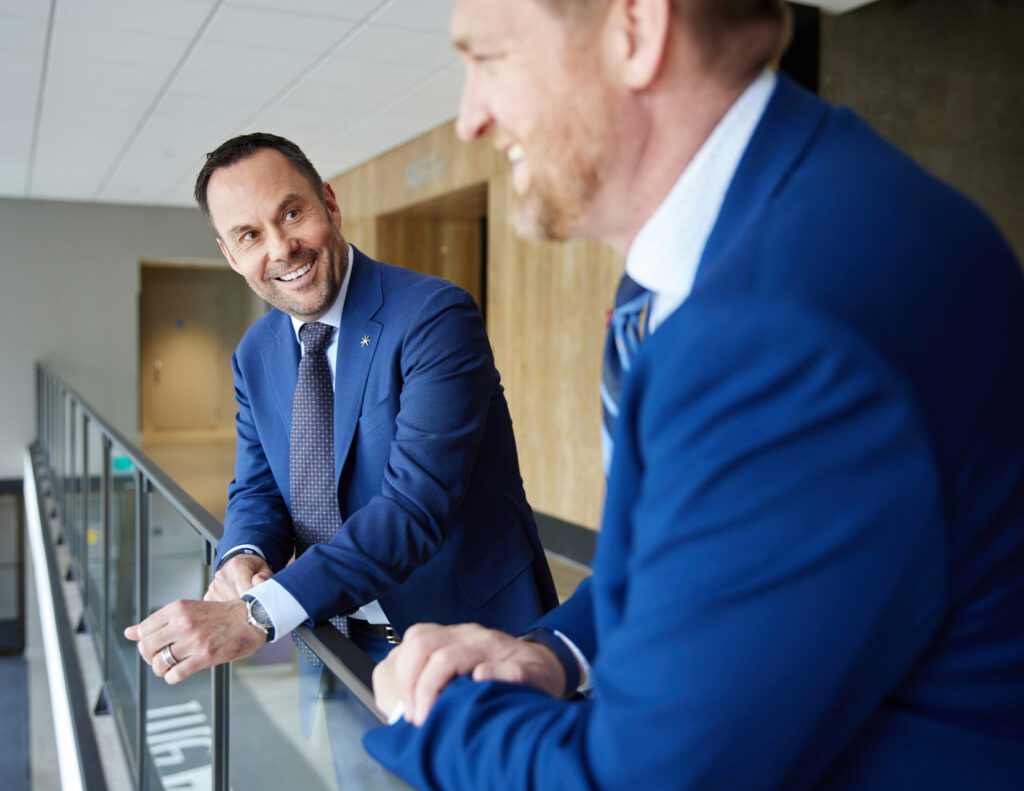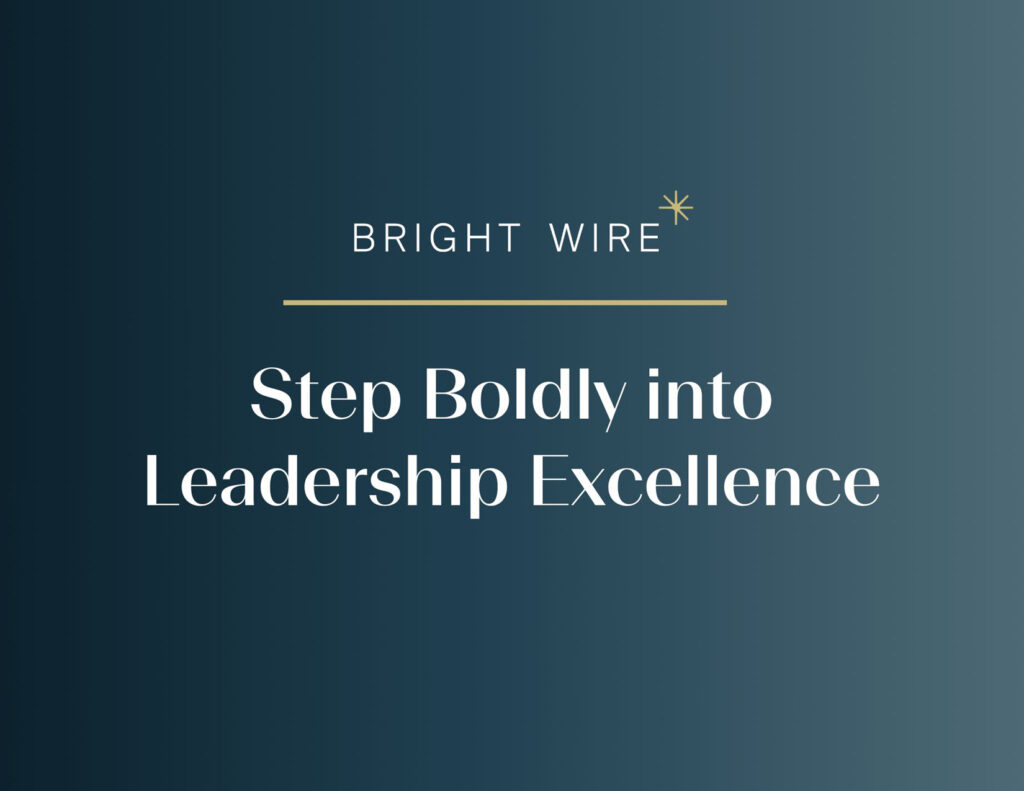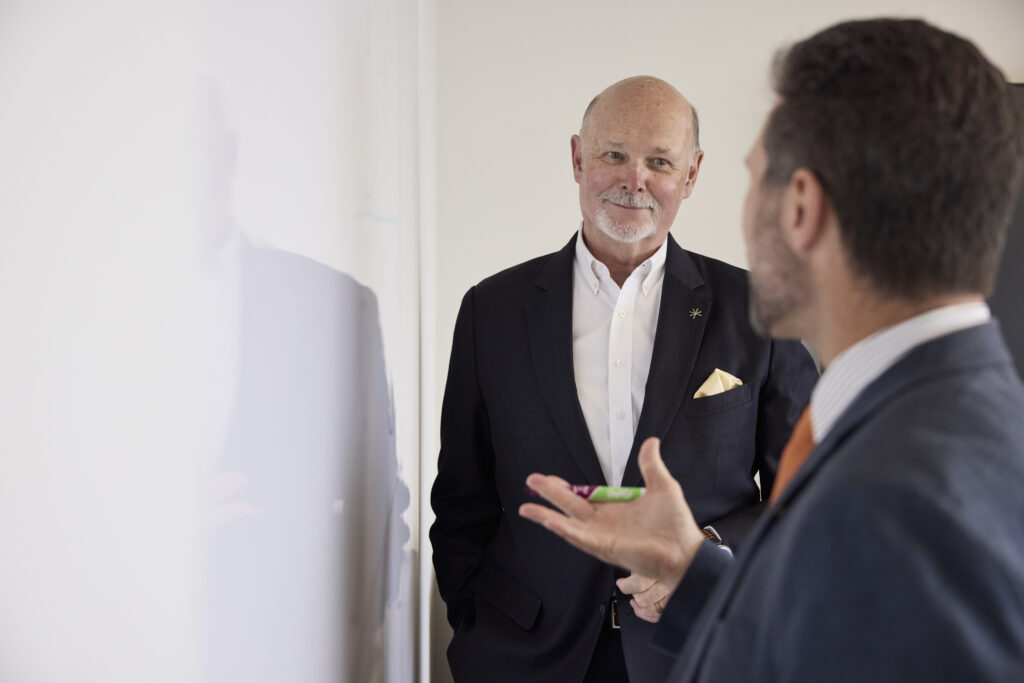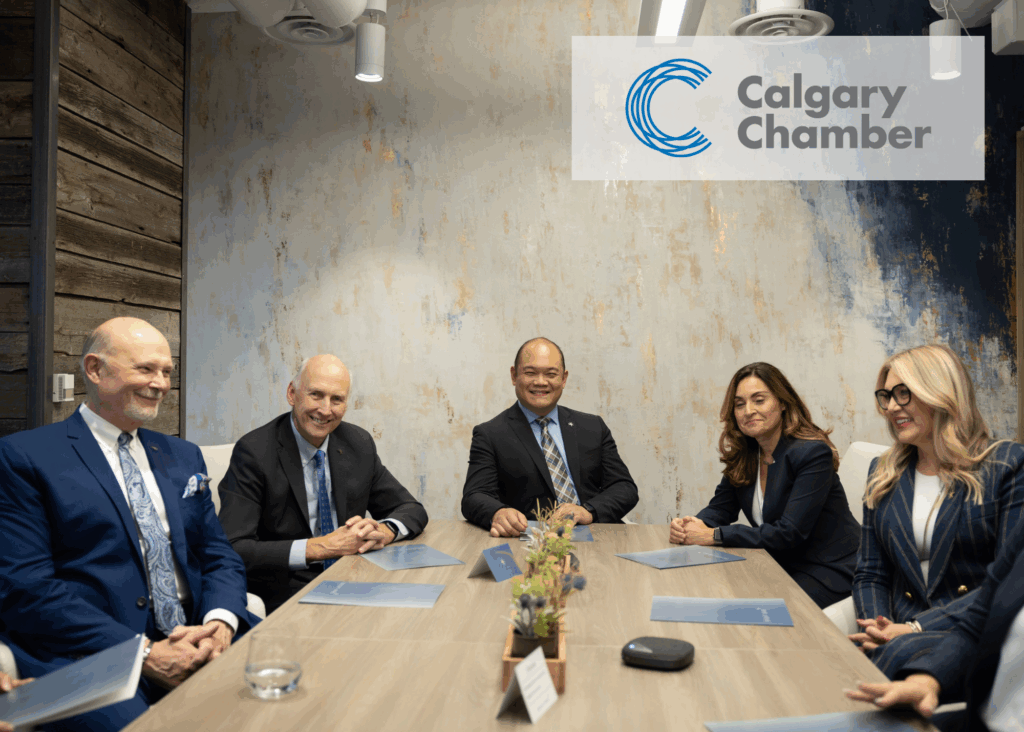Leading Change with Empathy and Vision, an informative conversation with Bright Wire Leadership’s Principal, Len Huckabay and Director of Innovation, Ed Temple.
Leading Change with Empathy and Vision, an informative conversation with Bright Wire Leadership’s Principal, Len Huckabay and Director of Innovation, Ed Temple.
Interview Highlights
- Human-Centered Change: Leading change focuses on people, effective communication, and managing resistance within the organization.
- Leader’s mindset and Communication: Leaders must articulate their
vision clearly and maintain frequent communication to ensure team buy-in and support.
- Sustaining Momentum Post-Change: Engaging teams and holding them accountable helps maintain progress and view change as an opportunity for growth.
"Leading change is a human initiative. It's about people, communication, and engagement.”
Ed Temple: Ed Temple here with Bright Wire Leadership, the Director of Innovation and Engagement, a master facilitator and executive coach, talking about leading change today. Change is an inherent part of our leader’s role. Whether preparing for it, leading it, or recovering from it, leading change is a continuous cycle that leaders must adeptly navigate.
At Bright Wire, our team of coaches have helped leaders successfully lead various organizational transformation, IT implementations, mergers and acquisitions etc. We’ve supported leadership teams in navigating change who have been responsible for some of the largest acquisitions and mergers in North American history.
We see change as a crucial leadership moment where we can leverage and develop skills. With the pace of change increasing and speeding up, mastering the skills to lead effectively through these transitions becomes increasingly critical. Leaders who learn to thrive in change also excel elsewhere due to the development opportunities and skills honed through change. We want to share our knowledge and perspective to help leaders thrive through change. This interview will explore various aspects of leading change, structured into three sections: the leader in change, implementing change, and finally post-change recovery and building momentum from there.
I have with us Len Huckabay, Principal at Bright Wire Leadership, an Executive Coach and Master Facilitator. I am looking forward to hearing your perspective on leading change. Welcome.
Len Huckabay: Thanks, Ed. I appreciate it. I’m glad to be here.
Ed Temple: To start, how do you define what leading change means and what makes a good change leader?
Len Huckabay: It’s a great question. There’s technical jargon around what leading change is—it’s about leading processes and guiding and managing the organization, transitioning to different things. But primarily, it is a human initiative. Often the focus is on strategy, operations, functionality, processes, even locations. We need to remember this is first and foremost a human initiative. You can’t have change without people, and change is constant. It’s about the interaction with individuals within an organization. The characteristics we want to pay attention to include vision and strategy, but it comes down to effective communication, how engagement and involvement unfold for people, managing resistance because change is disruptive. You can expect resistance, but also it’s about meeting people where they’re at and appreciating that not everyone loves change. Some of us love it, others are quite opposed to it. It’s about paying attention to the impact on the greater organization and, more importantly, on the people.
Ed Temple: With that framing about the importance of people in change, help us understand more about the importance of leaders learning to navigate change effectively.
Len Huckabay: Leaders are human too. Their experience of change will impact how they roll out change. Leaders often get caught up in the logistics. We always say to leaders, think of change like a race; you are further ahead in understanding the implications of change, what’s required, and why it’s happening. Often leaders get further down the road without realizing they haven’t brought their people and team along. They need to acknowledge that change is disruptive, there are different phases of change to consider, and how they increase their openness to understanding, communicating, and being present to what’s happening in the organization. Being able to navigate the change curve or flow of change is crucial for successful implementation.
"Leaders need to clearly articulate their vision for change and communicate it effectively to their teams."
Ed Temple: Leaders are important in how they can create a bridge in navigating change. When it comes to the leader’s role in building and communicating a vision for change, how can leaders effectively communicate their vision for change to their teams?
Len Huckabay: Communication often gets overlooked or isn’t prioritized. It is one of the most important relationship and leadership traits. Leaders tend to under-communicate. Being able to clearly articulate the vision is crucial because when change occurs, the first question people have is how will this impact me? Leaders need to understand the nuances and help people grasp the why of the change, what the future vision looks like, and that reactions will vary. Being able to get people on board with the vision, the why, the purpose behind it, the impact to the organization and individuals, and what success looks like at the end is essential. People put a lot of their faith in their leaders. If the leader isn’t clear on where the change is heading, they might not have the support and the buy-in and could erode trust if not careful.
Ed Temple: Leaders go through change themselves, so is it natural to consider how it will impact them first? At the same time, you have to be conscientious of the fact that your people are going through change, and they need you to lead through it. What advice do you have for when change comes to you, how to navigate that successfully first for yourself as a leader?
Len Huckabay: I love this question because it immediately makes us consider our personal feelings about change. As leaders, you’re expected to get on board, but often, behind-the-scenes conversations reveal misalignment; leaders may not agree with the change. It’s about becoming aligned with the purpose behind it. Understanding its impact on me as a leader is crucial for how I engage. If I’m not bought in, that will be evident in my communication and leadership.
First, recognize that change is coming, its purpose, and what you can control and contribute. We tend to focus on what we can’t control, but it’s important to concentrate on what is within our control at the moment. How does seizing that opportunity allow me to embrace this change? Once I understand that change is a journey and constant, I can then help my people make connections for themselves. We must navigate our own discomfort with change before assisting others. It’s like putting on our own oxygen mask first. How do we get comfortable with that? Knowing it’s both personal and professional, micro and macro, helps us better understand the vision of the change and adapt more quickly.
"Navigating change is like a race; leaders must bring their teams along the journey."
Ed Temple: I like that mask analogy. When you’re navigating change, the locus of our control is typically inside of ourselves. We can’t control what’s going on outside of ourselves. So often that is about our attitude and our mindset about how we’re going to go into that change. And that really sets the tone for our team. Building on that, I’m wondering, what are some strategies effective leaders use?
Len Huckabay: Leaders need patience, empathy, understanding, and accountability to help navigate change. They must acknowledge where people are. The second point is to have a solid communication plan. There is a tendency to under-communicate. Communicate the same message five ways and five times because people become numb to information and listen through their own lens. Communicating your vision and updates on the change keeps people informed. Without communication, people fill in blanks with their perceptions, perspectives, and assumptions.
Ensure people get accurate, timely data. Even if nothing has changed, tell them. This reassures them that you are informed and looking out for their interests and the organization. Always be open. If you don’t know, say so. Be neutral and realistic. Don’t overpromise. Be accurate. Tell them the reality and flex your style as needed.
Leadership requires many competencies and disciplines. At Bright Wire, we balance discipline for results with courage and a coach-like approach. Change is disruptive and deeply impactful. Leaders must have honest conversations with humility, adapt, and flex when needed. Leadership is challenging, and change adds complexity.
Ed Temple: How do you adjust midway through when things don’t go as you had planned?
Len Huckabay: Hindsight is 20-20, isn’t it? I’ve seen the best-laid-out change initiatives and plans, and you can’t control the unknown. Yes, there’s risk mitigation and all of those things that organizations will put into place. But a few things here are knowing that change is the only consistent thing that occurs in an organization. Yes, change is happening more and more. Quite frankly, people are getting change fatigue. Leaders and organizations need to be able to answer the question, what if we delay this change until after another? This gives people a break and an opportunity to catch their breath. What’s the implication if we don’t change this? Sometimes it’s change for the sake of change. Consider the impact on people’s well-being and their ability to meet those changes. Create a space to take a breath.
It’s key to look back; you can’t always anticipate what’s coming, but have the conversation around being human, making mistakes, and owning them. Say, we could have done it this way. Get feedback from your people. You’ve hired smart people; engaging them in the change dialogue will help reduce mistakes. Change should not be solely on the leader. It is an organizational and human initiative. Engage the humans working with you.
"In change, focus on what you can control and embrace the opportunities it presents."
Ed Temple: When you come to the end of change, how do you continue to build momentum and sustain it when people are feeling fatigued coming through the change?
Len Huckabay: There is always a chance of sliding back into our old ways, and the likelihood of that happening a little bit. Pay attention to the forward-looking focus of the benefits of what we’re doing; it’s also about engaging the people and giving them accountability. It’s easy to say it’s over, take a deep breath, and then revert to old ways or grumble about changes. First, find out what drives people and keeps them engaged, find a way for them to engage in the change initiative, and hold them accountable so they take ownership. It’s important that people don’t think change is happening to them. They should believe and be part of it, knowing they can engage in it. You’ll get better commitment if they know the accountability. There’s a danger of people becoming compliant. This is a bridge from moving from compliance to commitment and what they can do to keep this going.
Ed Temple: When you think of helping leaders prepare for the next change and the mindset of change being regular, what can leaders do to help their people be prepared to continue to grow and develop and expect change to come?
Len Huckabay: Yeah, interesting question, because often, it’s that great, we’re done. Check Let’s move on to the next change. But part of this is creating a sustained change environment. The only thing we know won’t change is that this is always going to be happening. So, what are the best practices? Do you have change coordinators to help educate people? Are they able to have a voice in how the change may work better? The best organizations I’ve seen have adapted this. One, know it’s a changing environment. Two, voices are heard and appreciated. It’s about helping people find how they can personally develop through the change. Change comes with so much opportunity. It’s helping people shift their mindset from, oh no, not another change to great, what’s the opportunity in front of me now as an individual or as a leader of this organization?
Ed Temple: Yeah, that’s a great point. One thing I would add is how we look at change as part of our job, not just something we go through, but as part of what we do. We are accountable for managing changes. We’re going to wrap up soon, and I have a couple of questions about how different groups face change.
For example, the people who are just told about change—they are the receivers of the change and didn’t get to speak into it at all. Then there are the people in the messy middle—they’ve been part of some decisions, but much of it is beyond their purview. They are leading the change and are also subject to it. Finally, there are the directors of change—the people driving it. Through these three lenses, what advice do you have for the person who’s just facing change, suddenly informed about it?
"Sustaining momentum post-change requires accountability and continuous engagement."
Len Huckabay: I would say it always comes back to the driver of the change, as they are leading it. For those facing change, ask questions to understand the desired outcome. How can you help ensure this change is successful? Often, people feel they have no control or say and end up complaining. Instead, find a way to get more involved. Even by asking your leader questions, you may connect better to the success of the change going forward.
Ed Temple: Yes, and that’s part of being in the early adopters, and they typically thrive better because they’re on the front end of being curious and being part of it. So, for the messy middle, where a lot of leaders find themselves leading the change and being part of some decisions but not all, what advice do you have for them?
Len Huckabay: For them, it’s similar to facing change. The messy middle has a stronger voice than those not involved at all. They should support those facing change, giving them more control to communicate differently. They should suggest how the change impacts them and their team and what they plan to do. By being more innovative, they can bridge between the two groups. They might be the strongest communicators of the change implications because they are involved and impacted by it.
Ed Temple: So great skills around being curious and being a bridge builder. For the last group, the people who are the directors leading the change at the very top, making the decisions, what advice do you have for them?
Len Huckabay: They need a measured sense of realism and should do a lot of reality testing. A high level of emotional intelligence is involved. It’s important to appreciate that their role is not just to implement the change but to help people navigate it. Have the conversations. When you see people struggling or going silent, get curious. Engage in dialogue with your team or one-on-one. Find out their concerns. Amp up their curiosity. They also need to be comfortable with ambiguity because they may not always have the answers. If you don’t know, say you don’t know and own your experience. This shows you are navigating this authentically.
Ed Temple: Thanks, Len. That’s excellent and helpful for everyone going through change, considering different perspectives and the various roles we play in navigating it. I really appreciate this conversation and your perspective on leading change. Very helpful. Is there anything you’d like to add to finish?
Len Huckabay: The thing for people to remember is that this is a human initiative, first and foremost. If you keep that in mind, you’ll likely remember everything else that was said.






